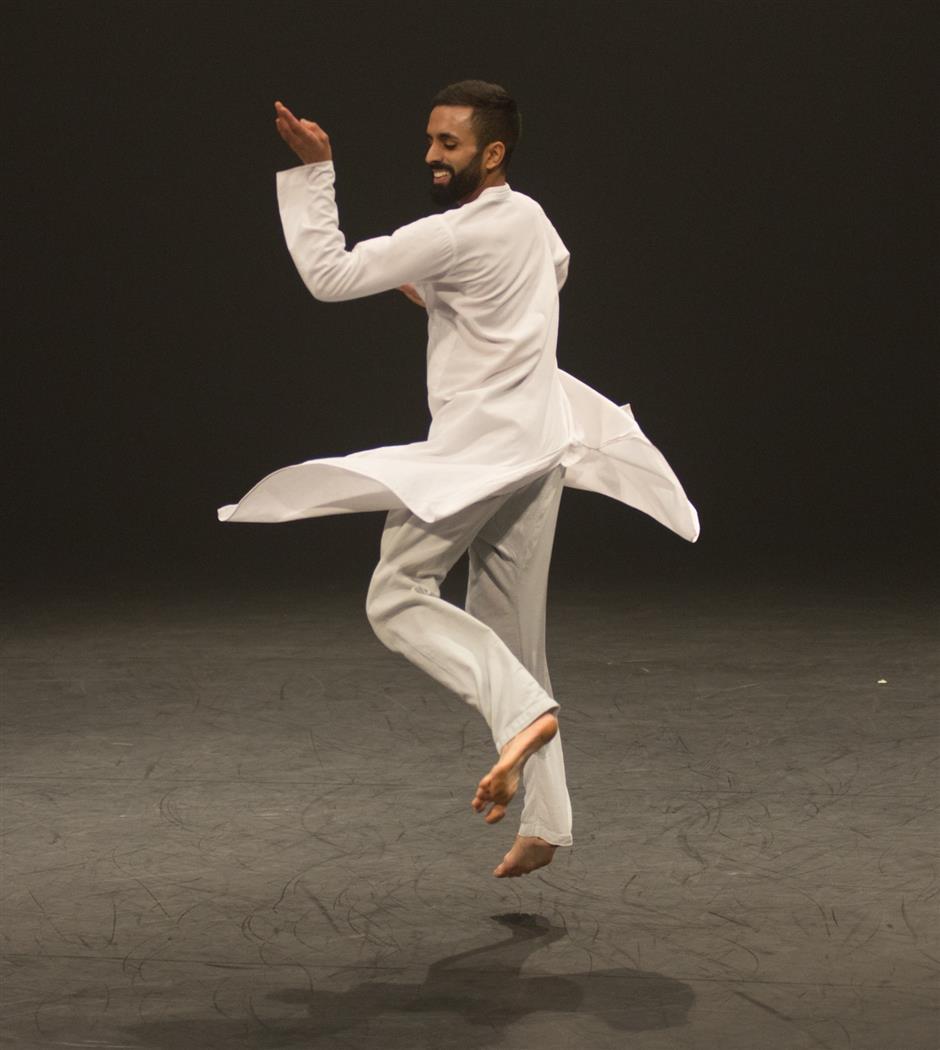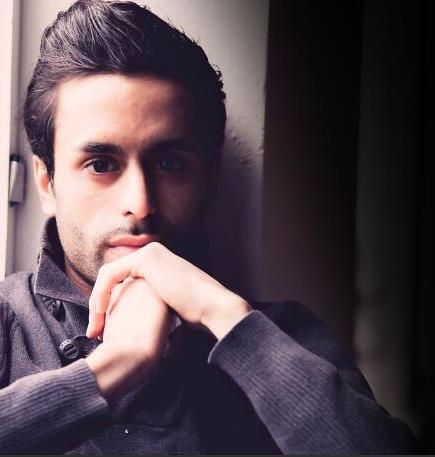Dancer finds inspiration from two diverse worlds

Aakash Odedra performs solo dance "Rising" in Shanghai.
Dancing, for the 32-year-old Aakash Odedra, is a means of communication with people, gods and himself.
The British dancer of Indian origin was at Shanghai International Dance Center last weekend, communicating with local audience with his performance in “Rising” (2011), which was choreographed by Akram Khan, Sidi Larbi Cherkaoui, Russell Maliphant and himself.
It is one of his representative works featuring a unique synthesis of his training in both classical Indian dance and contemporary dance and theater.
Odedra started learning dance steps from the age of 8 because he always wanted to be a dancer. For him who suffers from dyslexia, dance was his way of connecting with the world.
“People with dyslexia are creative because they have the third dimension of expression. For me, the third dimension of expression is dancing — a language without words,” says Odedra. “Dance is my way of communicating. I don’t need to read or write but dance.”
Born and brought up in Birmingham, the UK, Odedra chose classical Indian dances like Kathak and Bharat Natyam for his initial training due to his religious beliefs in childhood.
“The mythology of gods and goddesses fascinated me,” says Odedra. “When I closed my eyes, I could see gods dancing. Gods in the Christian world hardly dance, but they do in the Eastern world.”
Despite his love for dance, Odedra had to give it up for nearly two years due to his monetary condition. He worked at KFC, later with a debt-collecting company and even got a “real” job at a bank. When conditions improved, he returned to his first love.
“The real world is tough and harsh, where people don’t see the beauty of arts but value it with money, houses and cars,” says Odedra. “Dance saved me, protected me and kept me in place where I could view the world differently.”
He got his chance. His 5-minute Kathak solo performance at Akram Khan’s Svapngata Festival in 2009 caught the attention of the masters. Khan started mentoring him soon after and worked on a solo for him.
After launching his own company in 2011, Odedra explored the art form, combining his Asian classical roots with modern contemporary works.
As a choreographer, his credits include theater, opera and dance including “James Broan: Get on the Good Foot,” “God’s Little Soldier” and “Unearthed.”

Q: How did classical Indian dance training influence you?
A: When you have done something for 24 years, you can never discard it. It is like alphabets. My ABCD.
With this structure, I first made a portrait which was Asian. Now I make a portrait in the structure that you don’t need to be from Asia and can understand it. It is like Google translation.
My dance is the translation of what I want to say in the Asian context which anyone can understand.
Q: When did you start to “translate” things through dance?
A: Before I turned 18, I learnt different things but I didn’t have a tool to do it. Slowly, I started to make my own tools. I realized that I am not an Asian, but an Asian-British. I can speak English and my Indian mother tongue so I have choices.
Each language has its own expression so sometimes when you translate it you will lose its expression. I think it is very important that if I can speak a language which can keep the expression and retain the essence.
More people can enjoy and understand what I am trying to say and experience the Indian dance. When you integrate Indian dance with contemporary dance, it becomes more digestible and people may come to see the dance. When I was 18 years old, I started to explore Indian dance, and when I was 27, I did my first performance ─ “Rising.”
Q: It seems to be a trend today for artists to combine their own cultural legacies with contemporary arts. How do you see that?
A: We come from the nations that was once colonized by British, Dutch or other countries. The superior always belonged to white people in the Western world, which we tried hard to fit in.
But gradually, many of us realized that we had lost our own identities. To retain the identity, we usually go back to our past and probably discovered a richer and more profound culture.
Take dance for example. While Western contemporary dance is more about body, shape and movements, Asian dance is a combination of spiritual, mental and physical practice.
If you see the Western world as your father and your Eastern world as your mother, you can’t throw any of them away. It is natural for us to go back. We have adjusted long enough. Now it’s time for non-Asian audiences to understand Asian perspectives rather than their own.
Q: Do you think these two perspectives can be perfectly combined?
A: We have to try. Everything takes time. When we were colonized by Western countries, it took time for us to adjust and then we changed our roots and ways.
Now we bring Asian influences to the Western world, it will also take time for audiences there to understand it and change their perspective of dance. It is the same.
Right now, we are in the period of transition. We are still trying to find our ground.
Q: Many of your works are solo. Why?
A: I used to hate solo dance, but Akram Khan pushed me into it since my first solo ─ “Rising.” I really enjoyed the companions of dancers on stage because I could take the energy around me and go even higher.
But when I did solo, there were no other people around for me to get the energy from. Everyone looked at me and if I made a mistake, all eyes were on me.
The first two years of solo performances were a depressing, lonely journey for me. Then, I started to make loneliness my best friend. People are born alone and leave the world alone. I took solo as a spiritual journey, and learnt taking energy from the space, light and music around. That keeps my solo performances going.
Now I am doing my first group work that will be premiered in 2018 in Abu Dhabi. I am also working on a pas de deux with Chinese dancer – Hu Shenyuan. He is a phenomenal dancer. We will be a perfect match.
Q: Where do you usually get the inspiration from?
A: Life. Daily life, past life and future life.
As an artist, the environment affects you, what you hear affects you, what you see affects you. Sometimes it’s beauty and sometimes it’s ugliness.
Dance is the mirror of life. Dance is the reflection of my experience. There are people who dance to impress and those who dance to share. I belong to the latter one.
















